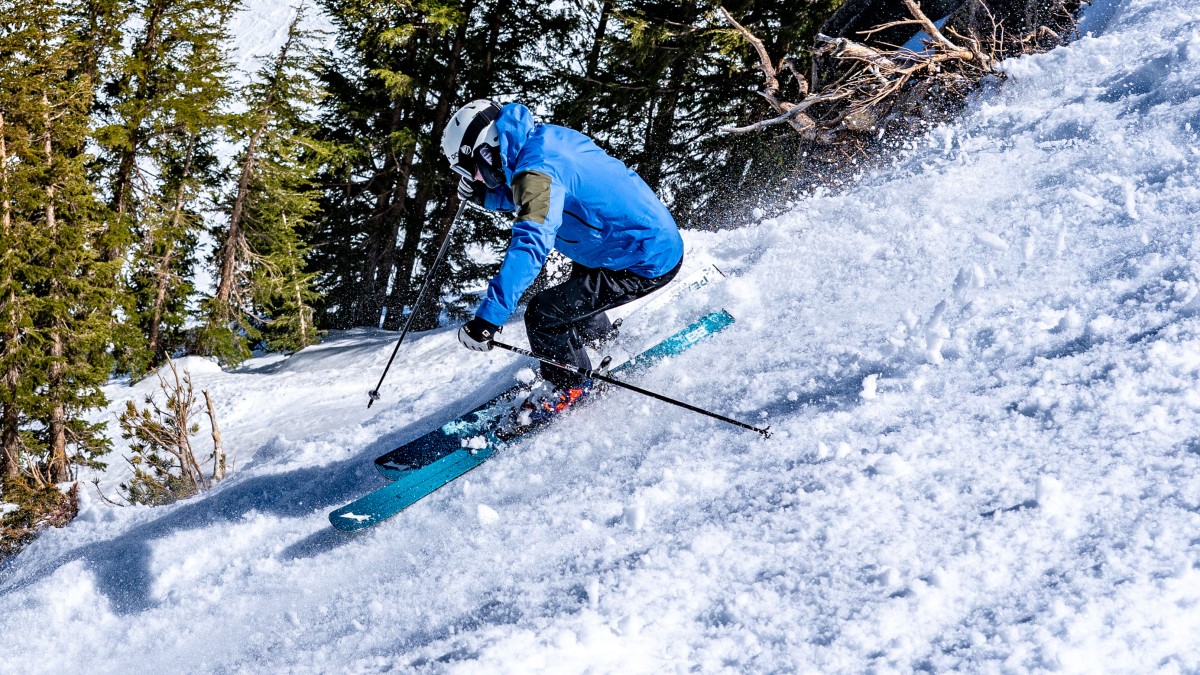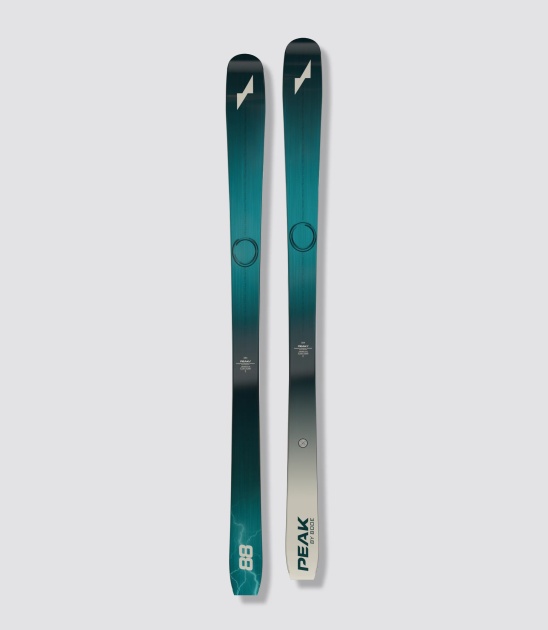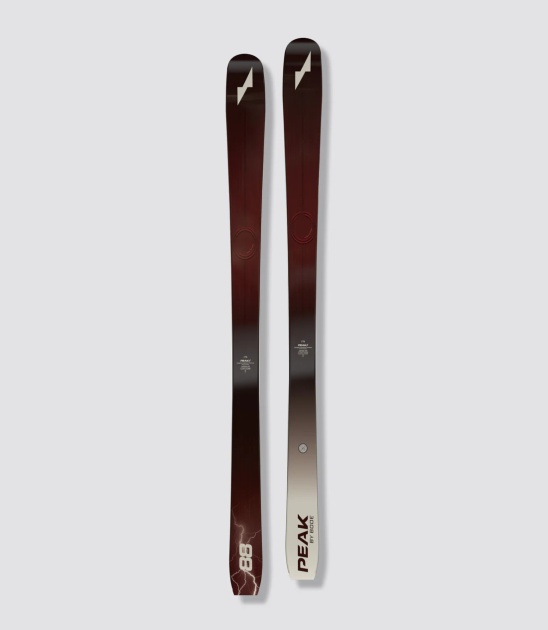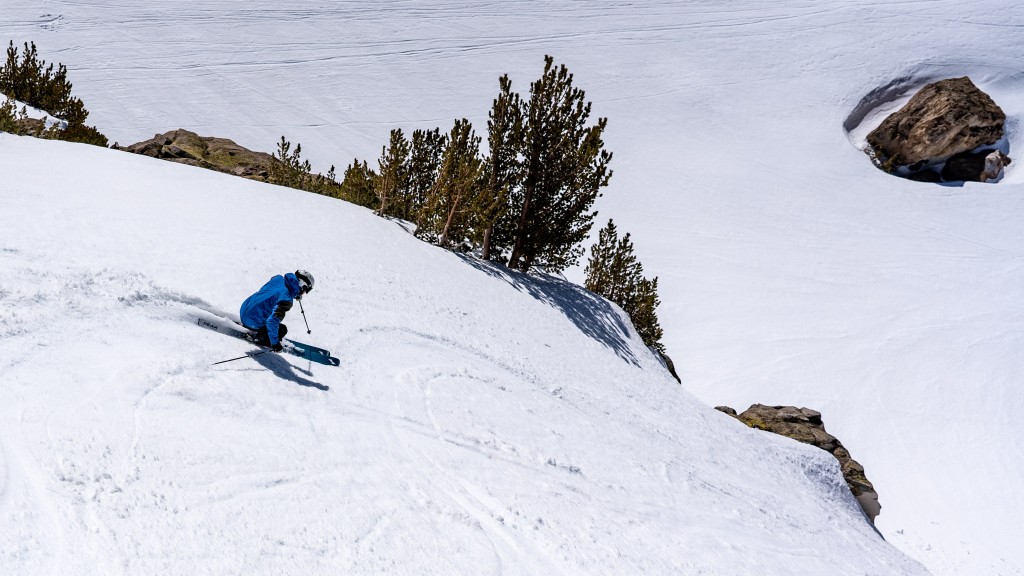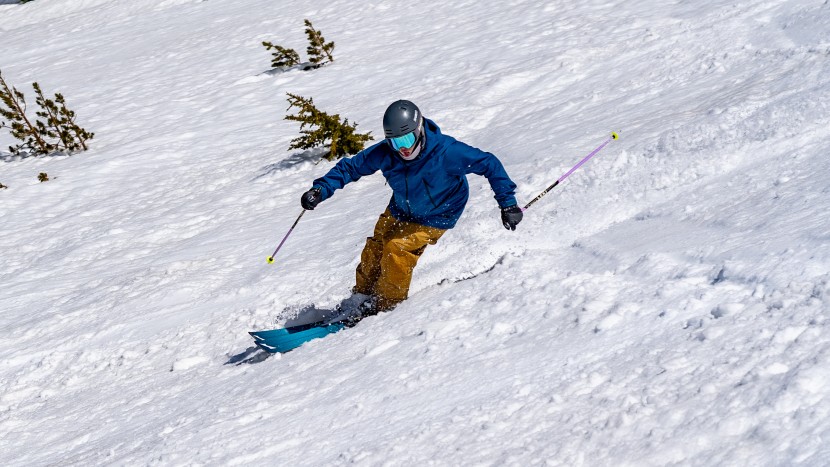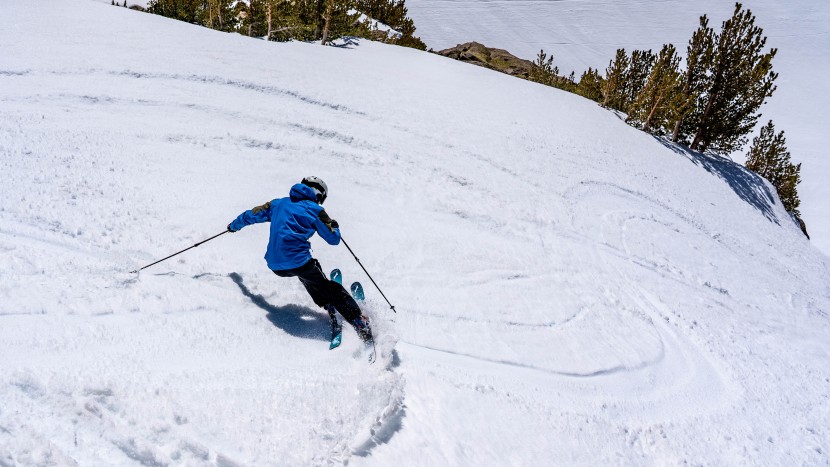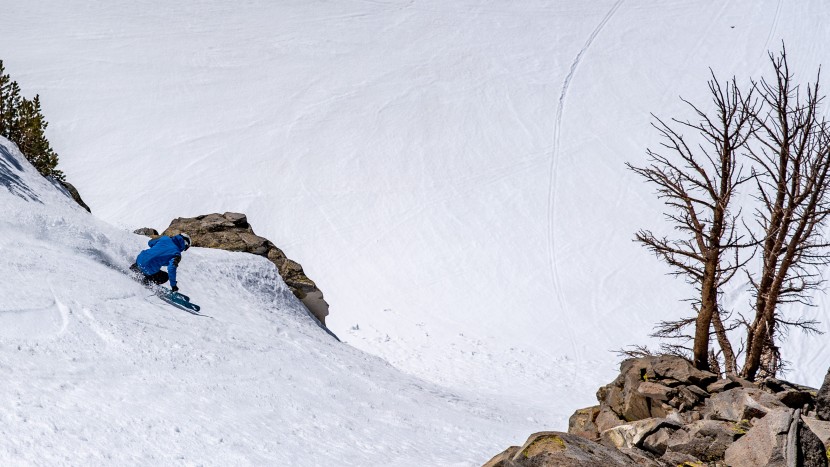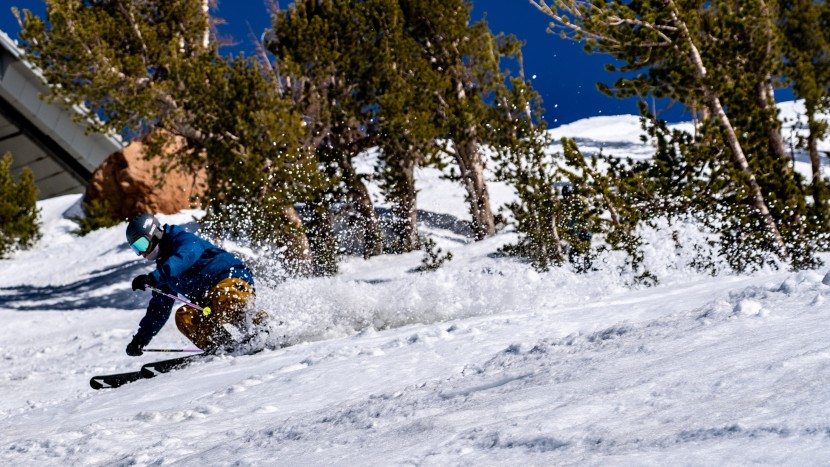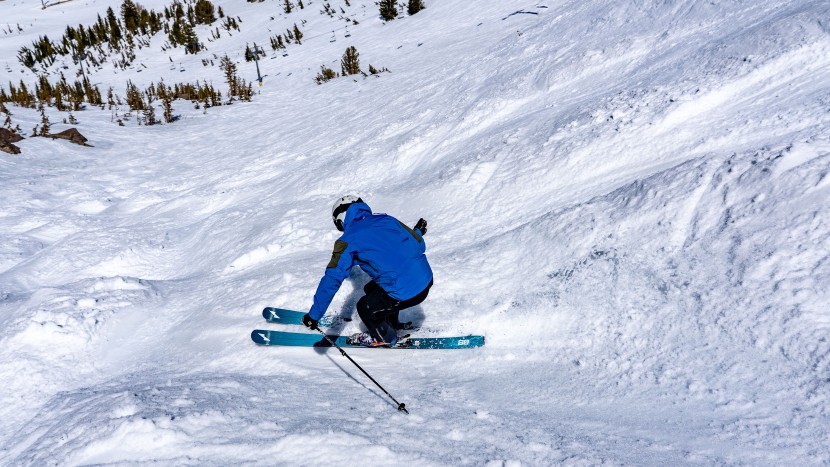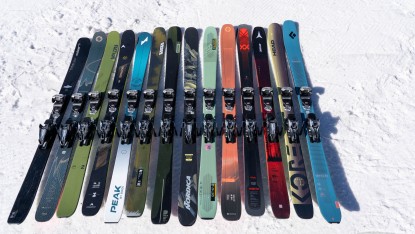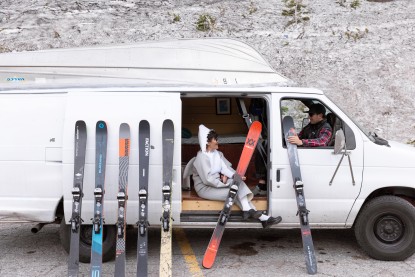
Our Verdict
Our Analysis and Test Results
Product Update – October 21, 2024
Peak Skis released an updated version of the Peak 88 by Bode (right) after we tested the in-line ski (left) during the 2023-2024 season. Although it retains the 88 mm waist width, the shovel and tail widths shrink from 130 mm to 120 mm and 110 mm to 108 mm, respectively. The 24/25 redesign purportedly results in a less aggressive sidecut than the 23/24 model we tested below, and Peak's product release claims it makes this ski even more accessible to more skiers. We will link to the newest Peak 88 – which is readily available via direct-to-consumer – and we will update this review once we've had ample time to test this new version.
During Bode Miller's time on the World Cup circuit, one of his ski builders attempted to cut through the metal laminate in a GS ski to install dampening plates. Bode noticed that the cutaway created “an inflection point in the flex that allowed for forgiving turn entry and powerful edging from the void back.” This is the origin point for Peak's unique KeyHole technology that they feature in every ski, including the Peak 88. We also want to point out that Peak is a direct-to-consumer brand that offers free shipping and an industry-scare 3-year warranty program.
Stability at Speed
The Peak 88 By Bode is a relatively easy ski to maneuver and, therefore, doesn't hang at high speed quite like other models can. The construction is a paulownia and ash core sandwiched between fiberglass and two sheets of titanal. Despite the relatively burly construction, heavier and more aggressive testers were surprised that the Peak 88 “folded” under pressure. It can still cruise comfortably at slow to medium speeds, and our testers enjoyed the lightweight feel underfoot while cruising groomers. At these speeds, this ski only needs a soft touch to perform any sort of carve.
Carving Ability
Carving is surprisingly challenging for many skiers. Our testers noticed that the Peak 88 provides a distinct advantage by edging easily during a “slarve” at medium speeds. This is an often-used combo move that skids through the top of the turn before transitioning back into a carve, thus helping the skier better manage their speed. We noticed there is still a tendency for this ski to pivot and smear at the start of slower-speed turns, which slightly lowers its score in this metric. However, the intuitive edging process combined with an ability to feel the ski tip over, hook up, and begin to de-camber without having to go fifty miles an hour is a welcome attribute for intermediate-level skiers, in particular.
Powder Performance
Wider skis are generally preferred for powder, and at only 89 mm underfoot (in the 184 cm size we tested), there are better options for skiing powder elsewhere in our lineup. The blend of shape and layup that make carving easier on the Peak 88 simply tears away from its performance in deep snow. However, for lighter-weight, athletic skiers, this ski may be just enough to get by. Its 125 mm tip is wide enough to provide some flotation, though the softer flexing tips required our heavier testers to make expert-level moves to keep from tipping over.
Crud Performance
We got knocked around a bit in difficult snow conditions on the Peak 88. It just doesn't plow through crusty snow as well as the heavier, more aggressive skis in our lineup. We also encountered a lack of consistency in the flex pattern when we went from hard to soft snow and back again quickly – like you would if you were skiing along the edge of a trail. The front of the ski tended to vibrate, and it lacked the communication through the middle and tail necessary to maintain contact with the snow. The Peak 88 is nimble enough to claw your way back onto the trail, but if you need to navigate choppy conditions, all of our testers agree that you'll manage well enough if you just dial back your speed.
Terrain Playfulness
The light weight of the Peak 88 pushes it to be more playful. Peak's concept of “accessible power” really shines through in this metric – all of our testers were impressed with how intuitively this ski adapts to quickly changing terrain. The big sweet spot under the Peak 88 makes varying turn sizes and shapes easy, which provides the skier with feelings of confidence and composure, especially when making tight moves. Our testers enjoyed the ability to pivot or set an edge quickly based on the obstacles that lay in front of them, allowing them to flow through the terrain effortlessly. For all of these reasons, our team agrees that the Peak 88 is a great choice for folks who love to mogul ski.
Should You Buy the Peak 88 By Bode?
Bode Miller and Chris Davenport are quick to describe the Peak 88 as intentionally designed to be accessible to a wider audience, and we absolutely agree. Even though it is narrow by today's all-mountain standards, this is a versatile, incredibly fun ski with the DNA of world-champion skiers baked right in. Playful frontside skiers – no matter what snowpack you live and ski in – should gobble it up.
What Other Skis Should You Consider?
If you prefer a lightweight ski and generally stick to intermediate- or advanced-level terrain, the Peak 88 is a strong contender for an all-mountain ski. Skiers at this level should also take a good look at the Salomon QST 92, which is a bit more solid underfoot in poor snow conditions. For folks aiming to improve their skills in powder, the Faction Agent 2 is a similarly versatile ski and a better value in this regard.


